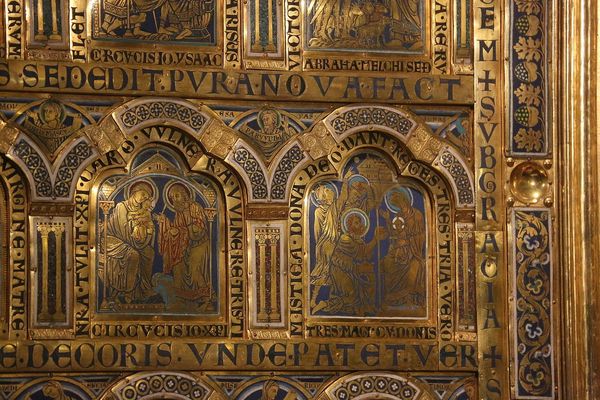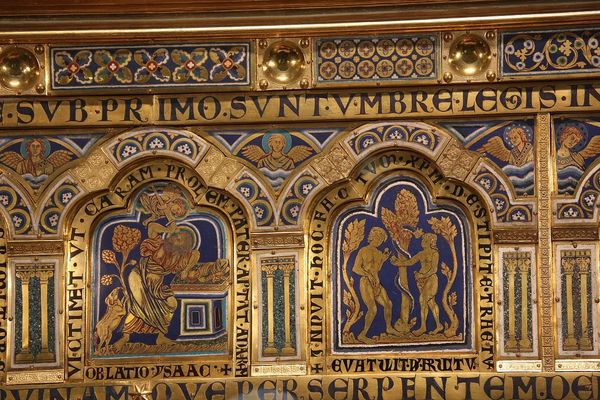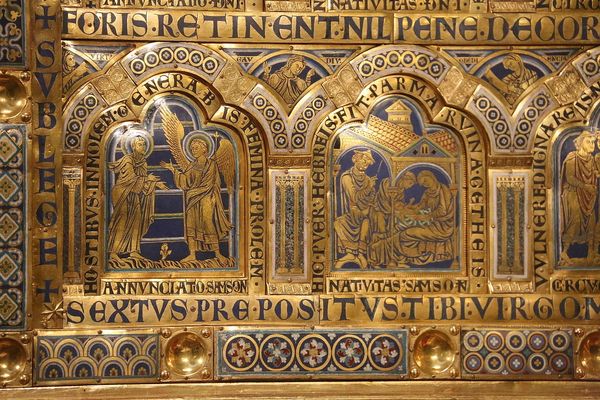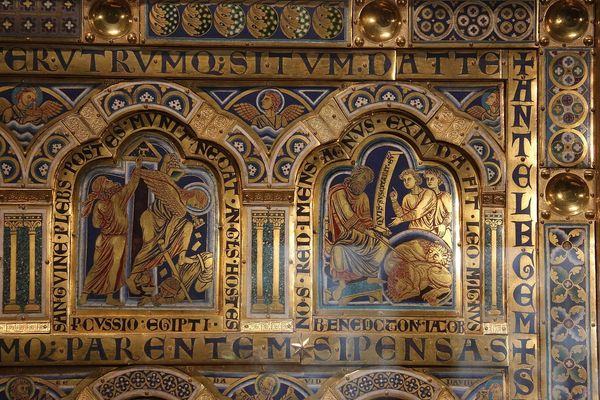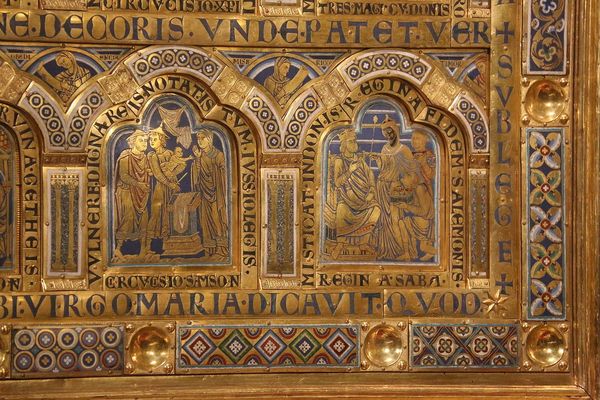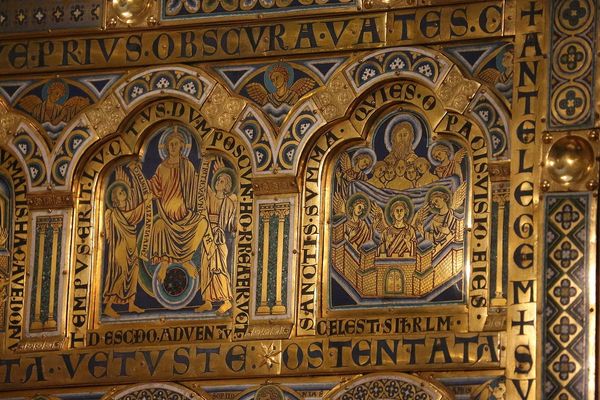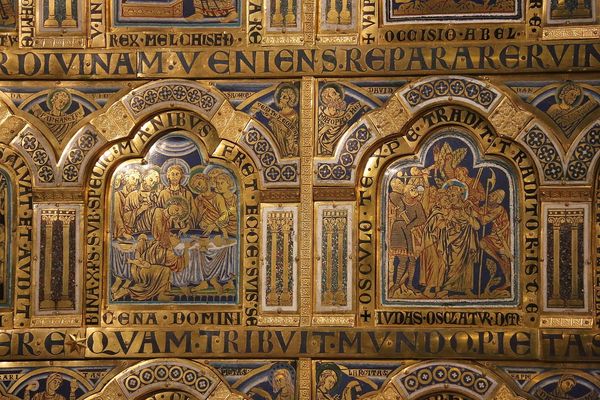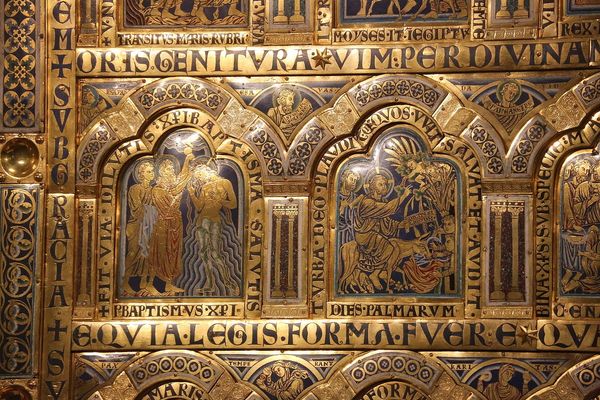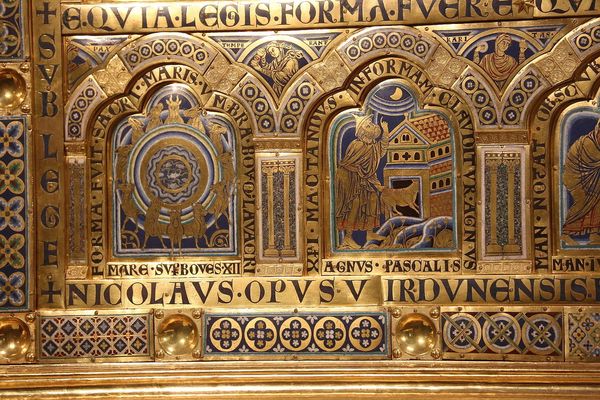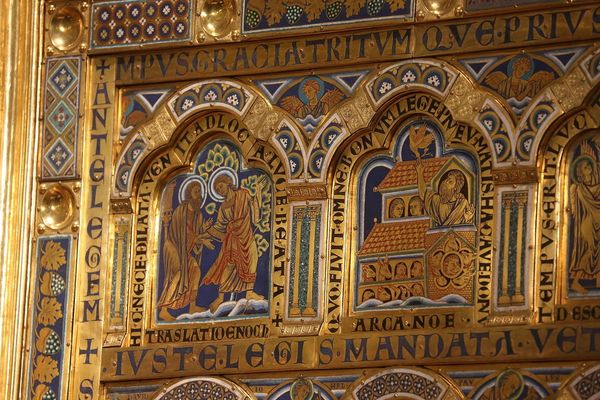
carving, tempera, metal, relief, guilding, sculpture
#
wood texture
#
byzantine-art
#
medieval
#
carving
#
tempera
#
metal
#
sculpture
#
relief
#
guilding
#
sculpture
Copyright: Public domain
Curator: Welcome to the audio guide for the Klosterneuburg Altar, crafted by Nicholas of Verdun around 1181. It’s a stunning example of medieval art, integrating sculpture, relief work, metalwork, and tempera painting, lavishly enhanced with gilding. Editor: It’s… overwhelmingly golden. There's an immediate impression of rigid order, of compartmentalized scenes, framed within very definite borders and weighty ornamentation. The symmetry feels very important here. Curator: The golden background, a Byzantine influence, signifies divine light, setting these biblical narratives within a sacred space. And you’re right, symmetry is central; notice the organization of the enamel plaques—how scenes from the Old Testament are juxtaposed with those of the New. Editor: The arrangement, then, isn’t just decorative; it's argumentative, creating a network of symbolic relationships. The medium itself communicates powerfully: gold implying wealth, status and power. Curator: Precisely. Think of the typological connections intended for the viewer—the Annunciation alongside the representation of Isaac. One illuminates the other, enriching understanding of Christian history and doctrine, weaving continuity between testaments and highlighting a preordained view of history. The inscriptions serve a critical didactic function, ensuring no symbolic meaning is lost. Editor: It almost feels more like philosophy translated into visual form than simple storytelling. The weight of tradition and predetermined meanings is palpable. Is there room, then, for the viewer's individual interpretation? Curator: Perhaps in the emotional impact of the figures themselves—their gestures, expressions. But ultimately, yes, the aim is to present an established worldview. Consider the craftsmanship, however. These are individual panels, yet unified to create this encyclopedic program. Editor: Seeing it like that—as a totality, striving to create unity amid these panels of compartmentalized imagery, gives it a unique force. Thanks. Curator: My pleasure. I find seeing the altar always enriches one's engagement with not just art history but with questions of history's very nature.
Comments
No comments
Be the first to comment and join the conversation on the ultimate creative platform.
